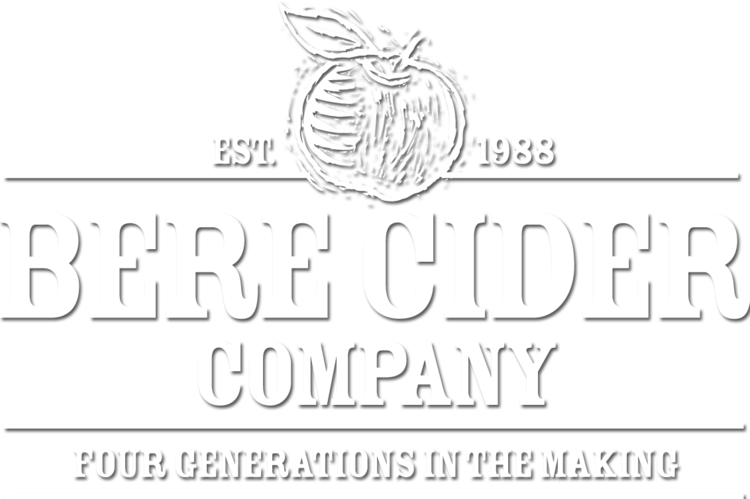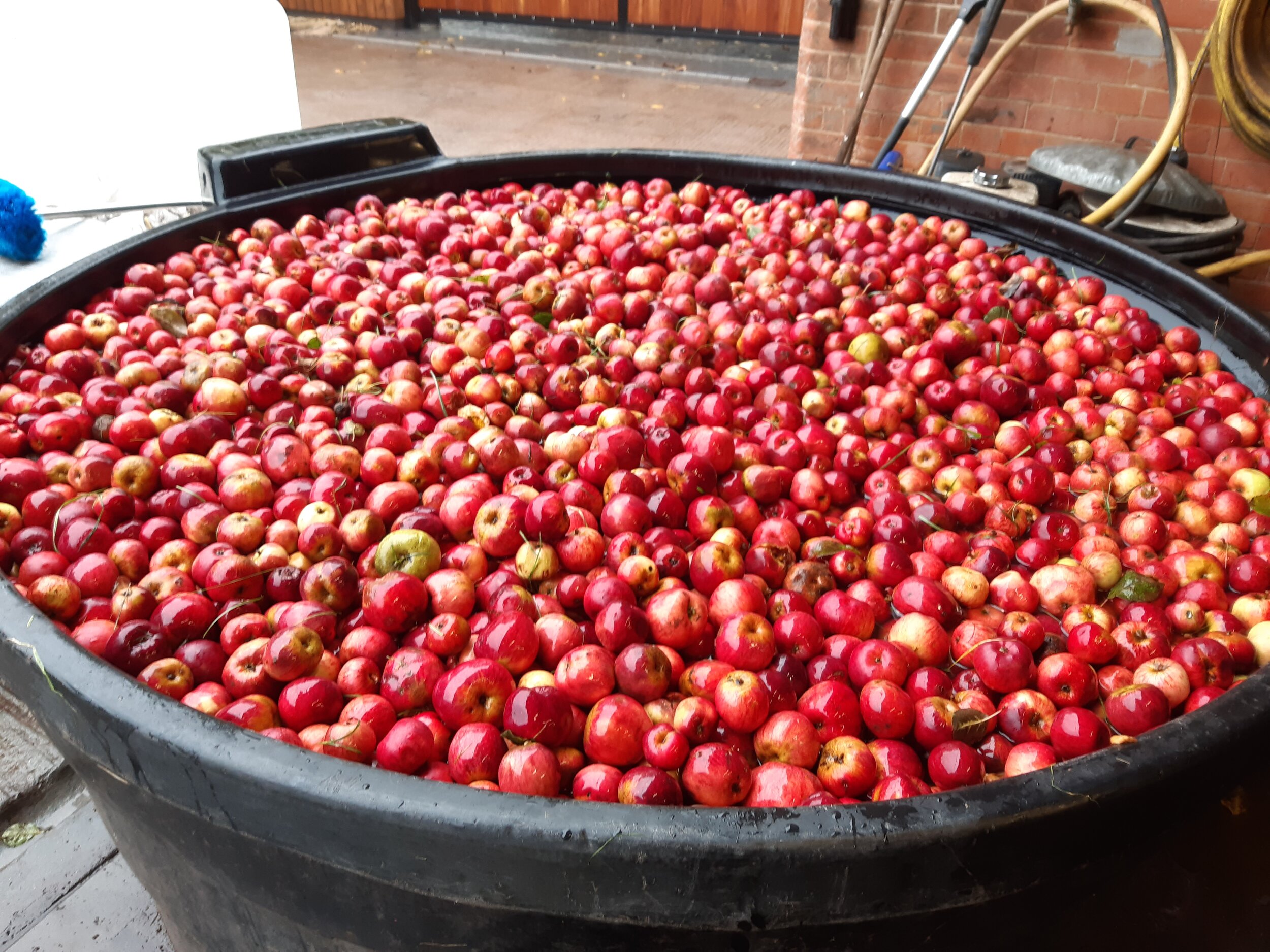Process
A quick guide to the
cider process
Harvesting
The fruit will ripen from late September to late November depending on variety. Some varieties such as Morgan’s Sweet can be harvested when the leaves are still on the trees in clement weather. Dabinett and Michelin are only ready in cold mid November. A tractor mounted tree shaker is used to harvest the crop. The machine is connected by a wire rope to the trunk of the tree, the PTO driven machine vibrates the rope to and fro and shakes the tree, which causes the fruit to drop. It’s then swept up by our apple picking machine into bags.
Washing and Milling
The apples are then washed to remove bits of grass and leaves and other debris. This reduces the risk of bacteria infection hindering the fermentation and the cider will taste better if the fruit is clean. As a craft cider makers only the best apples are selected and as part of the quality control, all the rotten or mouldy apples are removed before pulping. Unlike grapes where only the skins need to be burst, apples need to be completely crushed to properly extract the juice. Traditionally this was done using a large stone wheel which was wheeled around by a horse. We use a Somerset made antique milling machine which rotates to crush and grind the fruit.. The subsequent apple pulp (known also as pummice/pomace is then ready for pressing. The pomace can be left for 24 hours to macerate, the allow air to the pomace and can enrich the colour of the resulting cider. It does not however change the taste.
The Cider Press
After pulping, the apple pulp is transferred to the press where a cloth and rack system is used to build up “the cheese” before our ancient, manually operated screw press is compressed to provide the Juice. Once pressed, the various elements within the juice are tested. The proportion of sugar is tested by measuring the juices ‘specific gravity’. The typical density of juice is 1.050 SG compared to 1.0 SG for water - the higher the specific gravity, the higher the sugar levels and therefore the greater potential alcohol. The natural acids in the fruit are also checked – if they are too low, the juice can spoil more easily and if it is too high the resulting cider will taste too sharp.
Fermentation
The juice is then transferred to 1000 litre tanks to ferment. Fermentation is the process where the sugar in the juice is turned to alcohol with the help of yeast. This process can take between 6-60 days.
Rats
We are often asked if it is true that cider makers put rats or animal heads in their cider and although going back to an earlier period, there was a good reason for putting an old piece of mutton or some such into the barrel of juice. It gave the wild yeast something to multiply on and with a stronger yeast culture, the natural sugars were sooner converted to alcohol and the fermentation finished quicker. Allowing one the advantage of selling or drinking the cider several weeks before ones neighbours. You will be relieved to learn that we do not put rats or mutton into the cider we produce.
Maturing the Cider
The cider is then left to mature for some months after racking off in an air-tight vessel. In the late spring or early summer a secondary fermentation or maturation takes place which benefits the taste and character of the cider (it will mellow and lose much of its sharpness). The is the malo-lactic fermentation and will occur when the temperature reaches roughly 15 degrees Celsius . This stage affects the very complex flavours within cider balancing the acid and tannins.
Blending
After fermentation, different levels of tannin and sugar across different batches are balanced by blending the ciders. The final product is made from 100% apple juice and unlike most commercial cider makers, we do not water down the end product.
Sweetening
Cider naturally ferments dry i.e. all the sugar is turned into alcohol and therefore in order to provide sweet cider most cider makers will use saccharin to sweeten, which unfortunately has a rather bitter aftertaste or alternatively the cider is pasteurised when partly fermented retaining the natural sugars. Our draught ciders are unpasteurised and sweetened using sucralose, which provides a flavour which is more similar to that of natural sugar, without the bitter after taste.
Packaging
The cider is then pumped into Oak barrels, where they are matured and sold in 1, 2, 3, 5 10 and 20 litre containers and bag in boxes. We are also launching a bottled range in 2014.






